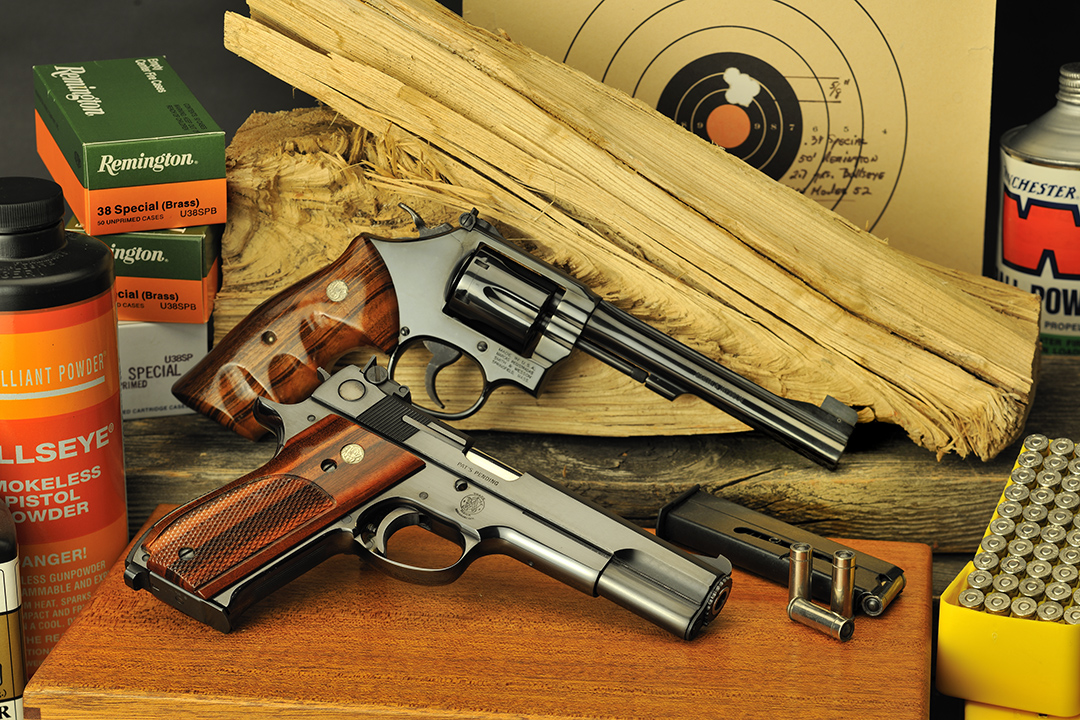
With wadcutter-type ammunition, Shooters can use both specialty guns like the S&W Model 52 below and the all-purpose Model 14 above. Both are capable of producing the accuracy desired from this type of .38 Special handload.
Like the popular 1955 Chevrolet Impala, the wadcutter bullet has seemed to drift into obscurity with all the newer, high-tech bullet designs now available to the handgun enthusiast. Years back, when target shooting was in its heyday, this bullet ruled the roost as its clean-cutting profile won or lost matches simply by its ability to produce a clear impact on the X-ring, making scoring easier. At that time, shooters either had the deep pockets to have a custom automatic, purchase a high-grade gun like the Smith & Wesson (S&W) Model 52, or to have their revolver tuned to the sport with precise tolerances, a crisp trigger or a bull barrel to help keep those sights on the target while under the competitive pressure of a match.
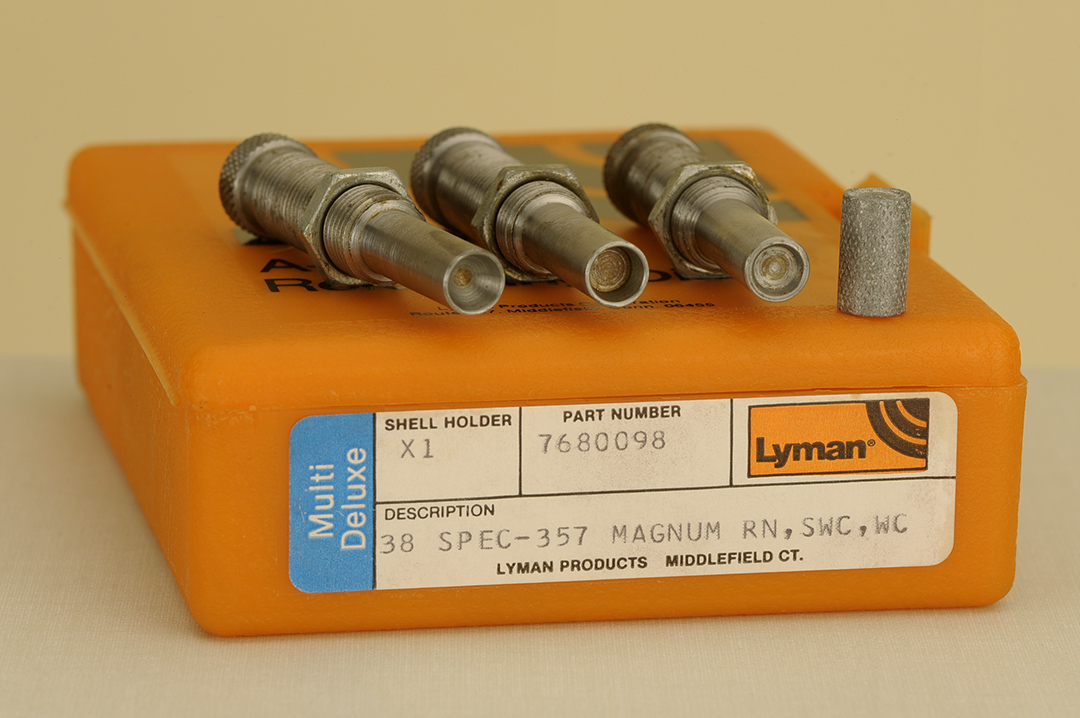
When purchasing a set of dies for wadcutter ammunition, either order a set with three seating stems like this Lyman brand, or order the wadcutter seating die as a separate item.
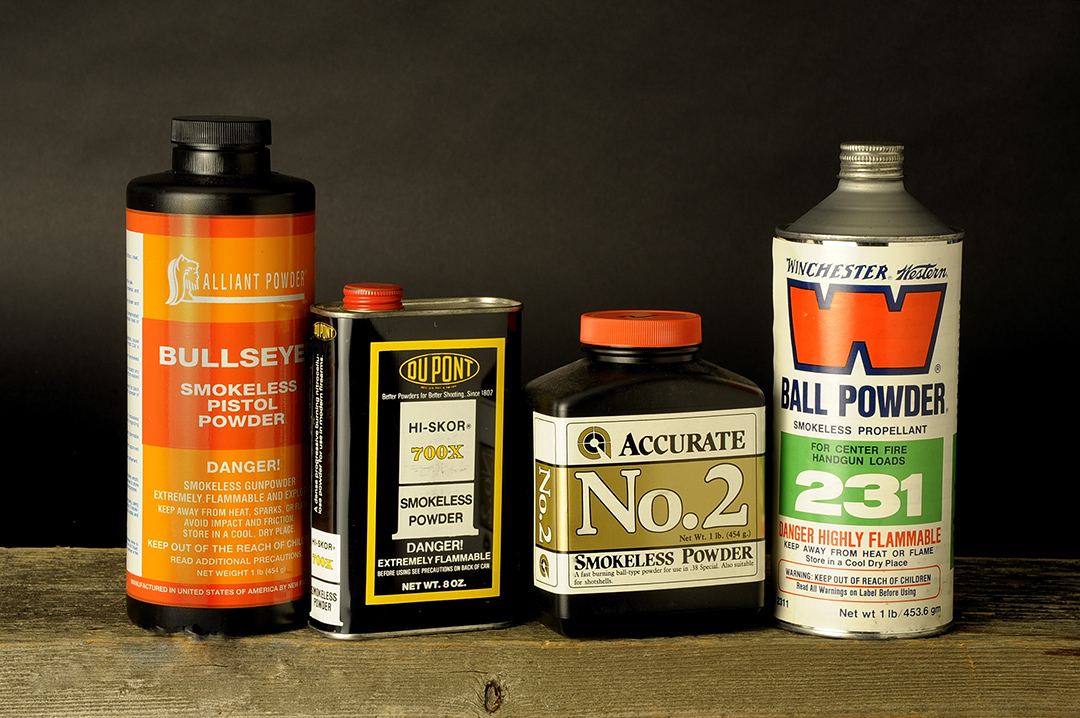
Target ammunition demands fast-burning powder like Bullseye, 700X, Accurate No. 2 or Winchester’s 231 for the best results. With these powders and small charges, handloaders will get more than 2,500 reloads per pound of powder.
Today, the wadcutter bullet is less in demand, but looking in the loading manuals, online or through catalogs, there are still various configurations of the bullet available. While some may laugh at all this or feel they are going backwards with a bullet of this type, let’s dig a little into the details just to see how we can apply this type of bullet to modern standards while still having some fun with it.
For those shooters who may have never heard of, or even shot a wadcutter, this type of bullet is usually lead in composition, flat fronted, cylindrical in shape and usually loaded flush with the case mouth. In the beginning, they were designed for shooting paper targets, usually at a short range, therefore adaptable for indoor matches where less noise in appreciated and adequate ventilation has been installed. Years back, I used to attend matches at indoor ranges and since the wadcutter is relatively soft spoken with less recoil and loaded to subsonic velocities, it was (and still is) a perfect vehicle for the job.
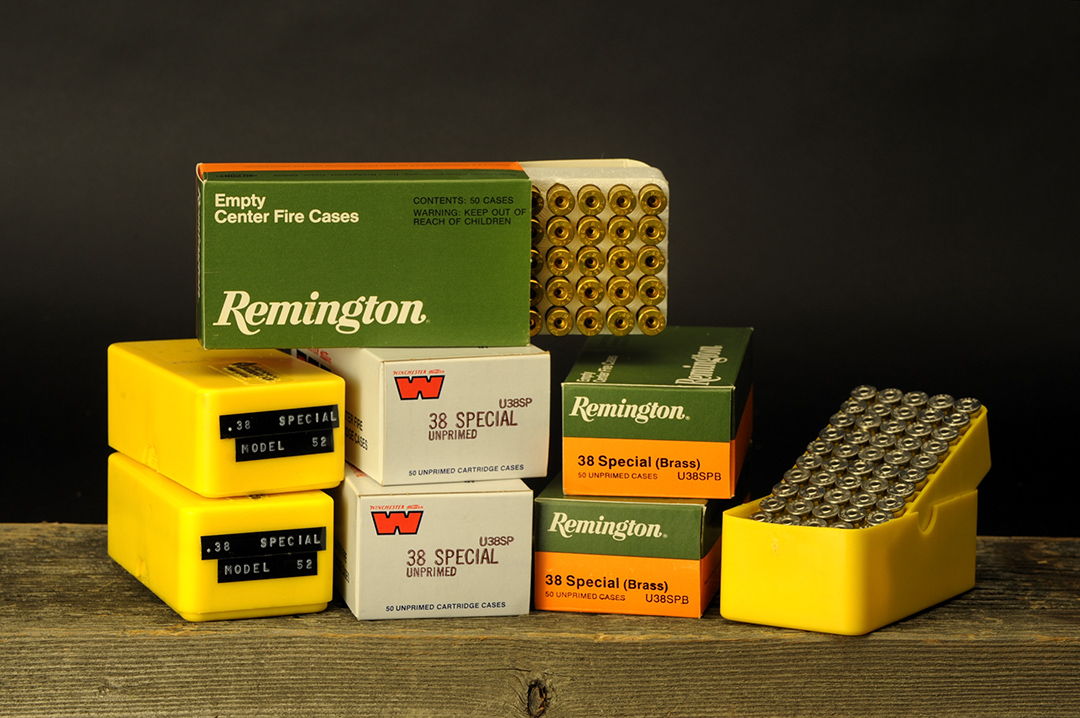
Since shooters are looking for the best in accuracy, it is a good idea to start with fresh, clean brass. Working with the popular .38 Special assures there will many brands to choose from and checking the inventory in my area shows quantities from low to moderate in stores now.
For target shooters, most of the more accurate loads use only a minuscule amount of powder. For this type of shooting, Bullseye seems to rally to the cause and I found that only 2.7 grains of this powder would give very tight groups at moderate velocities of around 700 fps (feet per second). Stretching this out, we see that one pound of powder (7,000 grains) divided by 2.7 will provide almost 2,600 handloads with very little in-bore leading problems. All loads are seated flush with the case mouth with a light to moderate roll crimp employed. This type of load works best in a specialized gun like the S&W Model 52 because its magazine was designed for this loading, but I have had no problems in a revolver like the Model 14, which is chambered specifically for the .38 Special.
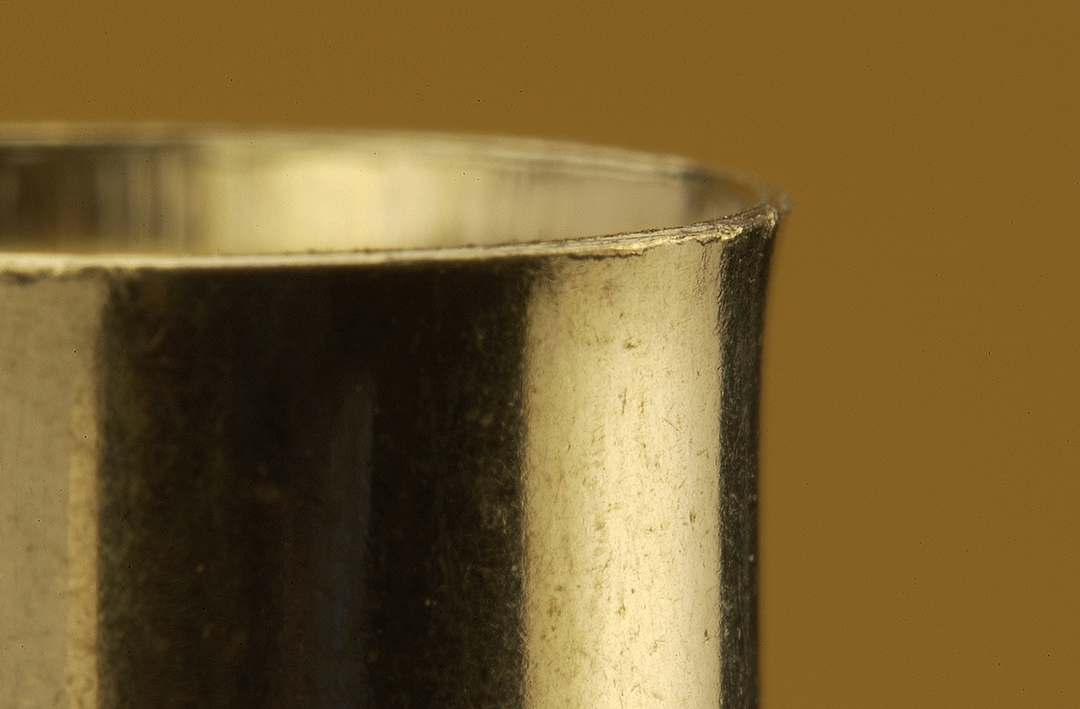
To ease lead bullets into the case, a small amount of expanding (or belling) of the case is necessary. This close-up shows the moderate amount of flare needed as too much will start working the mouth of the case leading to splitting.
Additionally, for those who still might use a snubnose revolver for defense, this could be an inviting alternative, especially for those who might be recoil shy. Understand that while conventional hollowpoint bullets will only expand when they reach a minimum velocity, this is hard to reach in a short-barreled gun, so their use is limited in defensive situations. Wadcutters, although they have to be beefed up a little more than a “target” round for protection, will do the trick as with their blunt tip and sharp right angles will punch a hole into soft tissue more effectively, thus making them more intimidating with this type of weapon at closer, more personal distances where most encounters happen.
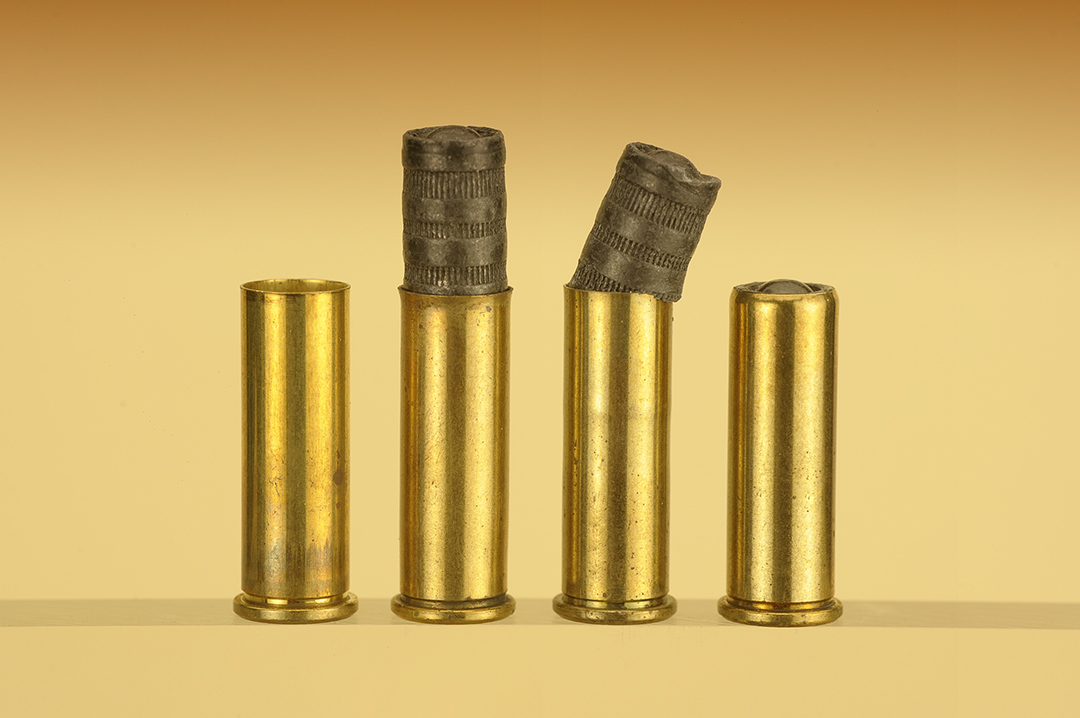
The sequence for loading wadcutters is from left to right – the new and sized .38 Special case, expanded case with wadcutter being started; the effects of loading if the handloader doesn’t expand the case; and fully loaded and roll crimped ready for shooting.
What is nice about wadcutters is that a shooter can use them in just about any weapon chambered for the .38 Special/.357 Magnum combination. For plinking, or just plain fun, I find a longer barreled gun is a good place to start as folks new to the hobby can use the sights to a better advantage and with more hits, they stay with the session. For hunting, since wadcutters are short-range projectiles, a reflex-type optical scope like the Leupold Delta Point might be more to your liking, while others in a higher power range might make it harder to find game in the crosshairs leading to lost or wounded game. Finally, by “pumping up” the loads a bit and using a shorter barreled gun, it makes for a good defensive weapon, especially when it comes to recoil and/or muzzle blast.
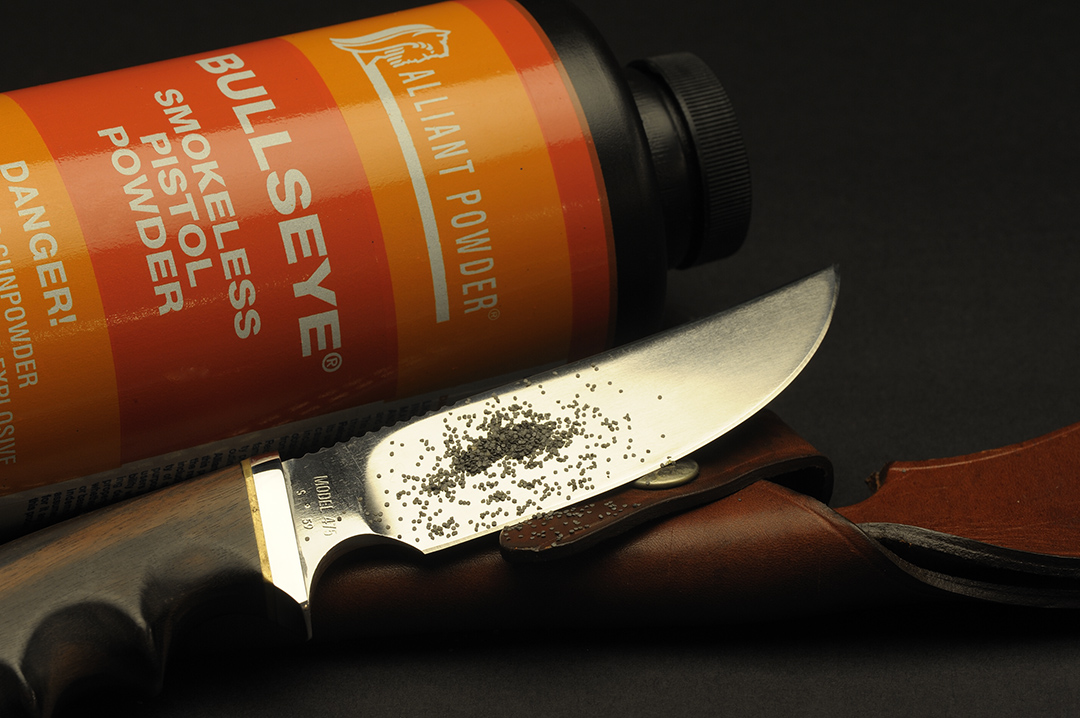
This is how just about 2.7 grains of Bullseye looks. With such a small amount in the case, it’s a good idea to check all the cases for double charges with the aid of a small penlight.
With all that said, handloading is the way to go to custom make your ammunition as mentioned, depending on the gun you are using. Commercial ammunition is available for both applications – target and defense – but for paper punching, it gets expensive. For defense, where possibly only sighting-in the gun and then loading six rounds for a night out, this might be the way to go. Presently for handloading, folks like Hornady, Speer, Remington (limited availability), Missouri Bullet Company and Berry’s make a wide variety of both lead and lead-coated bullets for just about any use. The other alternative is to cast your own with the precision bullet moulds available today from Lee, Lyman or Saeco, but in general, I found factory-swaged bullets more uniform and provided more overall consistency than most home cast slugs of the same weight.
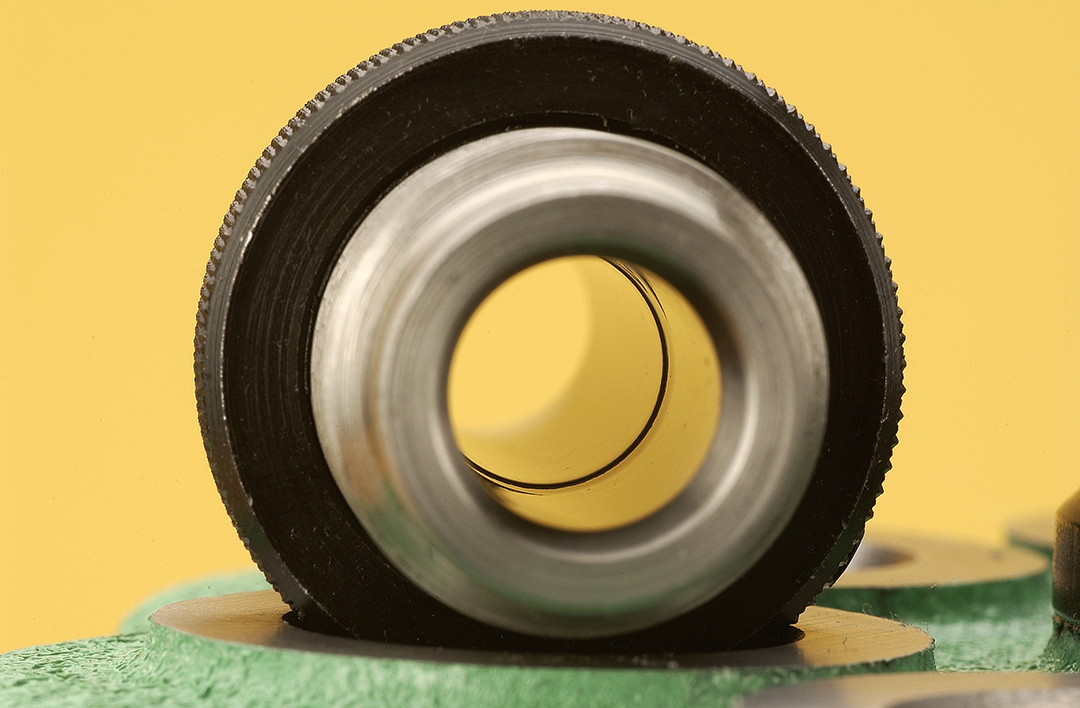
Still, another option that handloaders will need is a quality taper crimp die to finish the handload. With flush-seated wadcutter bullets, a small roll crimp is best.
When it comes to wadcutters, there is a variety to include the hollowbase, semi and semi-wadcutter hollowpoint and a lead roundnose if the shooter uses an automatic and they are looking for flawless feeding. There were more designs, but with the pandemic and the lack of interest on some of the other shapes, they were discontinued. Keep in mind that for the most part, wadcutters were specifically designed for close target distances anywhere from 50 feet to 25 yards and any hope of cutting edge accuracy above that is highly unlikely or desired.
When it comes to equipment, except for a few items, what is on your bench works well with these blunt nose projectiles. When starting out, stay away from so-called “once-fired” brass. Stick to accumulating a fresh batch of .38 Special cases as a good investment that will last forever using lead bullets. If you have a gun chambered for the .357 Magnum, using this slightly longer case will help to prevent “ringing” within each chamber filling in the space between the case mouth and the forcing cone within each chamber.
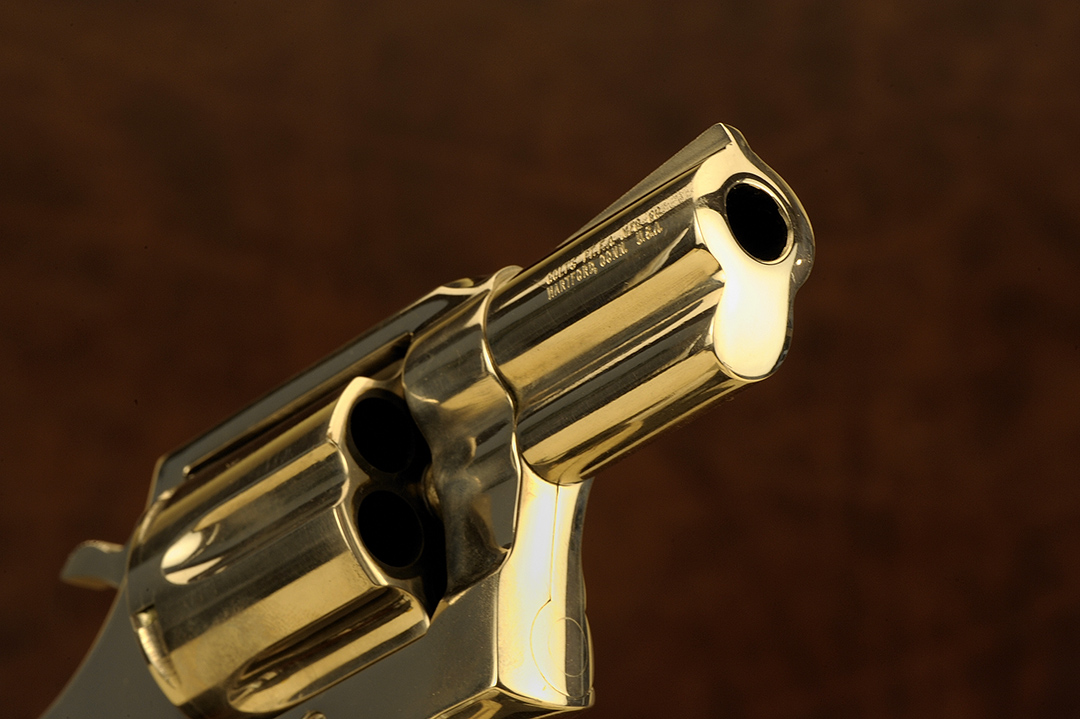
For defense with short-barreled “snubby” handguns, use a wadcutter bullet loaded to around 800 fps for the best effect. This is the perfect weapon to carry for such duties as the recoil is mild and at close range, a shooter doesn’t have to worry about pinpoint accuracy.
The only note that I would add here is to try a pick a die set with a variety of seating stems included in the package. I have a .38 Special/.357 Magnum Lyman set purchased years back that includes a roundnose, semi-wadcutter and a wadcutter seating stem that will take care of any bullet I may want to load. The alternative is to purchase a seating stem for the wadcutter bullet as a separate item. Following this, the expander (or belling) die is important, as for the most part, the handloader will need to expand the mouth of the case slightly more when seating lead – as opposed to jacketed – bullets to eliminate any shaving of the bullet upon entering the case. The seating die should have the ability to roll crimp and seat at the same time, but if a handloader runs into depth problems with seating the bullet flush with the case mouth, they can always crimp as a separate operation for the ultimate precision with each round.
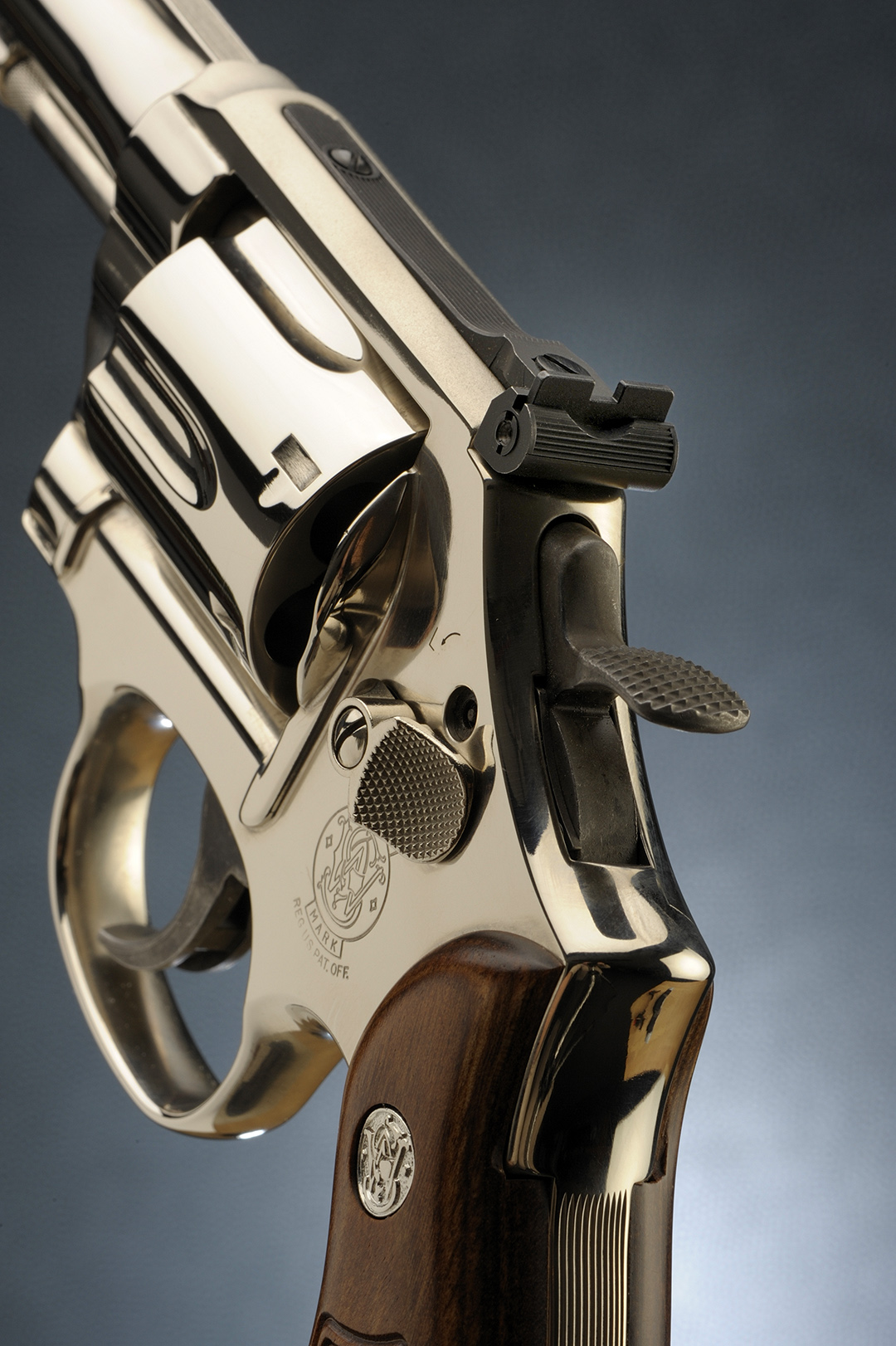
The Smith & Wesson Model 14 was introduced in 1947 as the K-38 Target Masterpiece. Built on the “K” frame, it was renamed in 1957 when the company went to a numerical numbering system. A few versions were available in both nickel and blued, with a 4- or 6-inch barrel. The gun is still being produced today and chambered in the .38 Special only is perfect for low velocity, target-type handloads.
When starting out, check the overall length of the case after sizing as new or once-fired cases always get full-length sizing before moving on, which should come to no more than 1.155 inches. No need to use magnum primers with mild target loads and fast powders as standard primers do such a good job, which means there is no need to look further. Seating them flush with the bottom of the case and after each one has been primed; I have the habit of looking at each case before I place it in the loading tray. One operation that seems to work well when priming is to expand the mouth of the case at the same time. Here is how it works: set the expanding die to the desired flare needed for working with lead bullets. Now, place the case on the shellholder, on the upswing of the operation, flare the case on the downward motion of the ram and prime at the same time.
Powders are always an interesting choice, especially when putting together target loads with very small charge weights. For my .38 Special wadcutter target loads, I used Bullseye, Winchester 231, 700X or Accurate No. 2. Depending on which burning rate chart is referenced, they are the fastest in burning rates with Bullseye coming in at number 2, Accurate No.
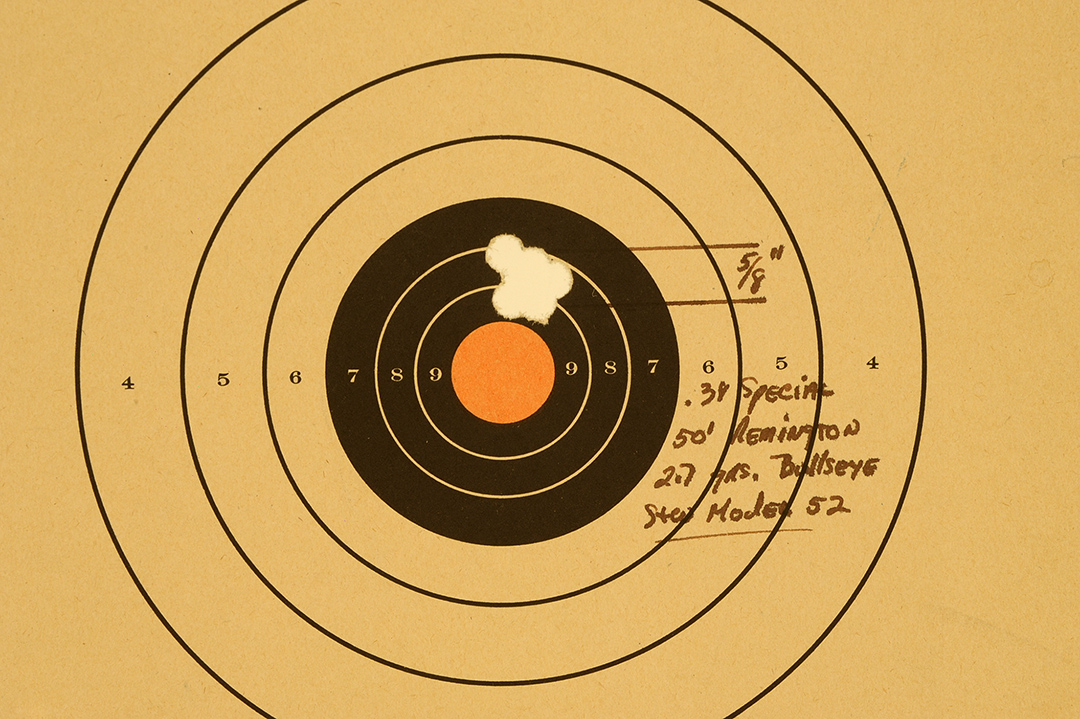
With the Model 52 in a Ransom Rest, this is the result of knowing how the gun will shoot without depending upon the shooter to prove its worth. This is with the time-tested loading of 2.7 grains of Bullseye with a 5-shot group at 50 feet.
2 at 7, 700X at 9 and Winchester’s 231 at 17 out of 131 powders listed.
These powders were easy to work with and flowed through my older Lyman, RCBS or Hornady’s newest Auto Charge Pro Electronic measure with no problems. The other advantage is that once the scale is set and the handloader is happy without measuring each charge and checking every tenth for accuracy, they can move right along. Be advised that once the cases have been fired, they can build up some darkness or soot on inside bottom of the case. With this in mind, and since the charge weights are small, this would be a good time to inspect for double charges just in case; a small penlight is handy for this. Once the cases have been primed, charged and flared, bullet seating and roll crimping is last followed by an inspection to make sure all are seated properly to the mouth of the case, ready for storage.
Bullets were from Hornady, Remington and Speer, but others have been tried over time. When it came to the best accuracy, 2.7 grains of Bullseye seemed to be the most versatile with all the brands with Accurate No. 2, and 700X following close behind. Average velocities ran around 700 fps (Bullseye), 760 fps (Accurate), 662 fps (700X) with hovering between 5/8ths and 7/8ths of an inch at 50 feet with the Smith & Wesson Model 52 with the 5-inch barrel.
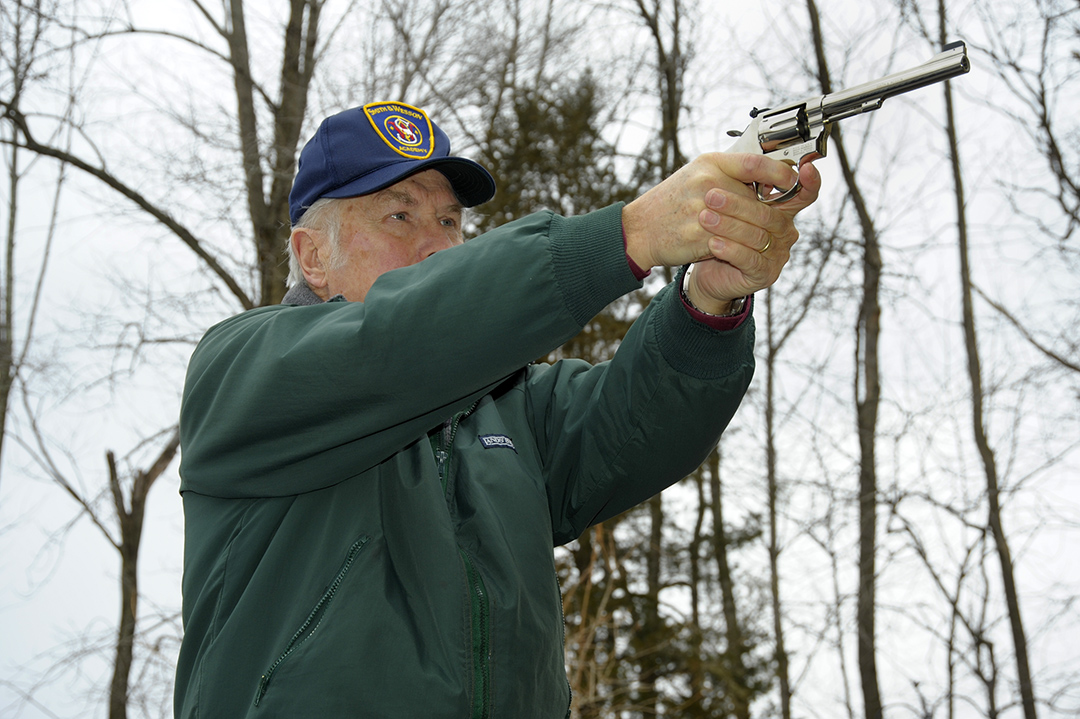
Shooting wadcutter bullets at target velocities is a great way to spend the better part of the day relaxing. Here, Stan is firing the nickel-plated version of the Model 14.
If looking for accuracy, use the gun in a rest, trusting that for uniformity, not the shooter in an offhand position. I use the Ransom Rest secured to the range tables, which bolted to the framework of the overhead roof assuring nothing moves during the testing program. The rest is easy to use and once a cadence is established, shooting and recording go fast.
The shooting sport is loaded with various avenues of which to pursue. Of late, it seems the high-powered, high-velocity cartridges seem to bask in the limelight. While overshadowed by many, .38 wadcutter ammunition is still a pleasant way to spend an afternoon relaxing at the range. Try it!













